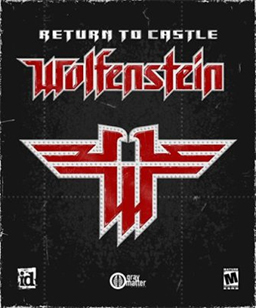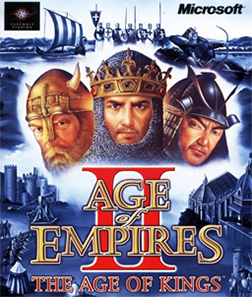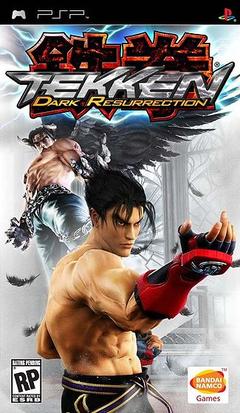
Return to Castle Wolfenstein is a first-person shooter video game developed by Gray Matter Studios and published by Activision. It was released on November 20, 2001 for Microsoft Windows and subsequently for PlayStation 2, Xbox, Linux, and Macintosh. The game serves as a reboot of the Wolfenstein series. id Software, the developers of Wolfenstein 3D, oversaw the development and were credited as executive producers. The multiplayer side eventually became the most popular part of the game, and was influential in the genre. Splash Damage created some of the maps for the Game of the Year edition. A sequel, titled Wolfenstein, was released in 2009.

Dominions II: The Ascension Wars is a 4X turn-based, computer strategy game. It was developed by Illwinter Game Design and published by Shrapnel Games. The game was released on November 14, 2003 in North America for Microsoft Windows, Mac OS X and Linux.

Dungeon Siege is an action role-playing game developed by Gas Powered Games and published by Microsoft in April 2002 for Microsoft Windows and the following year by Destineer for Mac OS X. Set in the pseudo-medieval kingdom of Ehb, the high fantasy game follows a young farmer and her companions as they journey to defeat an invading force. Initially only seeking to warn the nearby town of the invasion of a race of creatures named the Krug, the farmer and the companions that join her along the way are soon swept up in finding a way to defeat another race called the Seck, resurgent after being trapped for 300 years. Unlike other role-playing video games of the time, the world of Dungeon Siege does not have levels but is a single, continuous area without loading screens that the player journeys through, fighting hordes of enemies. Also, rather than setting character classes and manually controlling all of the characters in the group, the player controls their overall tactics and weapons and magic usage, which direct their character growth.

Age of Empires II: The Age of Kings is a real-time strategy video game developed by Ensemble Studios and published by Microsoft. Released in 1999 for Microsoft Windows and Macintosh in 2001, it is the second game in the Age of Empires series. The Age of Kings is set in the Middle Ages and contains 13 playable civilizations. Players aim to gather resources, which they use to build towns, create armies, and defeat their enemies. There are 5 historically based campaigns, which conscript the player to specialized and story-backed conditions, and 3 additional single-player game modes; multiplayer is also supported.

Painkiller is a first-person shooter video game developed by Polish game studio People Can Fly and published by DreamCatcher Interactive in April 2004 for Microsoft Windows and ported to Xbox in 2006. The game's single player campaign follows a dead man in Purgatory who is offered a deal to defeat the invading forces of Lucifer's army in exchange for being allowed to enter Heaven. The game was particularly well-received for its multiplayer experience and was featured for two seasons on the Cyberathlete Professional League's World Tour.

Disgaea: Hour of Darkness is a tactical role-playing video game developed and published by Nippon Ichi Software for the PlayStation 2. Set in a world full of demons and angels, the story follows Laharl, the son of a demon overlord, who upon being awakened after a two-year slumber, aspires to succeed his father's place while also fighting rival demons in the process.

Dragon Quest VIII: Journey of the Cursed King is a role-playing video game developed by Level-5 and published by Square Enix for the PlayStation 2. It was released in Japan in 2004, in North America in 2005, and in PAL regions in 2006. It is the eighth installment of the Dragon Quest series and it is the first English version of a Dragon Quest game to drop the Dragon Warrior title. A version of the game for Android and iOS was released in Japan in 2013 and worldwide in 2014, with a version for Nintendo 3DS releasing later in 2015 in Japan and 2017 globally.

Star Wars: Empire at War is a 2006 real-time strategy video game developed by Petroglyph Games and published by LucasArts for Microsoft Windows and Mac OS X. Set between Episode III and Episode IV, it focuses on the fledgling struggle between the Empire and the Rebels. It uses Petroglyph's game engine Alamo. In October 2006, an expansion titled Star Wars: Empire at War: Forces of Corruption was released.

Clive Barker's Undying is a horror first-person shooter video game developed by EA Los Angeles and published by EA Games. The game's story was written by acclaimed horror writer Clive Barker. He also provided the voice of Ambrose Covenant, a character in the game.

Star Wars: Battlefront II is a 2005 first and third-person shooter video game based on the Star Wars film franchise. Developed by Pandemic Studios and published by LucasArts, it is a sequel to 2004's Star Wars: Battlefront and the second installment in the Star Wars: Battlefront series. The game was released in PAL regions on October 28, 2005, on the PlayStation 2, PlayStation Portable (PSP), Microsoft Windows, and Xbox platforms, and in North America on November 1 of the same year. It was released on the PlayStation Store on October 20, 2009, for download on the PSP. The PSP version was developed by Savage Entertainment.

Shining Force II is a tactical role-playing game for the Mega Drive/Genesis console developed by Sonic! Software Planning and published by Sega in 1993. Its storyline is not directly connected to the original Shining Force, although a Game Gear title Shining Force Gaiden: Final Conflict links the two games' plots.

The Lord of the Rings: The Battle for Middle-earth II is a 2006 real-time strategy video game developed and published by Electronic Arts. The second part of the Middle-earth strategy game series, it is based on the fantasy novels The Lord of the Rings and The Hobbit by J. R. R. Tolkien and its live-action film series adaptation. It is the sequel to Electronic Arts' 2004 title The Lord of the Rings: The Battle for Middle-earth. Along with the standard edition, a Collector's Edition of the game was released, containing bonus material and a documentary about the game's development.

Tekken 5: Dark Resurrection is a 2005 fighting game and a standalone update to the PlayStation 2 game Tekken 5. The arcade version was released in Japan in December 2005 and later worldwide in February of 2006, while the PSP version was released later that year in July 2006. The game was also released as a downloadable game on the PlayStation 3 via the PlayStation Network online service in Japan in 2006 and the rest of the world in 2007. A sequel, Tekken 6 was released in 2007.

Suikoden is a role-playing video game published by Konami. It is the first installment of the Suikoden series. Developed by Konami Computer Entertainment Tokyo, it was released initially in 1995 for the PlayStation in Japan. A North American release followed one year later, and a mainland European release came the following April. The game was also released for Windows and Sega Saturn in 1998, but only in Japan.

God of War II is a 2007 action-adventure game developed by Santa Monica Studio and published by Sony Computer Entertainment for the PlayStation 2. It is the second installment in the God of War series, the sixth chronologically, and the sequel to the 2005 video game God of War. It is based on Greek mythology and set in ancient Greece. As with its predecessor, vengeance serves as its central motif. The player character is protagonist Kratos, the new God of War who killed the former, Ares and is consequently lifted into godhood. He is betrayed by Zeus, the King of the Olympian gods, who strips him of his godhood and kills him. Slowly dragged to the Underworld, he is saved by the Titan Gaia, who instructs him to find the Sisters of Fate, as they can allow him to travel back in time, avert his betrayal, and take revenge on Zeus.

Age of Empires: The Age of Kings is a turn-based strategy video game developed by Backbone Entertainment and published by Majesco Entertainment for the Nintendo DS handheld video game console. It is a spin-off of Microsoft's Age of Empires series.
God of War is an action-adventure game franchise created by David Jaffe and developed by Sony's Santa Monica Studio. It began in 2005 on the PlayStation 2 (PS2) video game console and has become a flagship series for PlayStation, consisting of nine installments across multiple platforms. Based on ancient mythologies, the series' plot follows Kratos, a Spartan warrior who becomes the God of War and comes into conflict with various mythological pantheons. The earlier games in the series are based on Greek mythology and see Kratos follow a path of vengeance against the Olympian gods; the later games are based on Norse mythology and see Kratos on a path of redemption while also introducing his son Atreus as a secondary protagonist, as they come into conflict or interact with various Norse deities and figures.

Warrior Kings: Battles is a real-time strategy video game developed by British studio Black Cactus and published by Empire Interactive in Europe and co-published with Strategy First in North America. It is a sequel to the 2002 game Warrior Kings and was released March 21, 2003 in Europe and September 30, 2003 in North America.
Endless Space is a 4X turn-based strategy video game developed by Amplitude Studios and originally published by Iceberg Interactive. It was released on 4 July 2012, for Microsoft Windows and 31 August for Mac OS X. In the game, the player takes charge of fictional Space Age civilizations, expanding their influence by colonization and conquest. Endless Space sold over 1 million units, and earned the Unity Golden Cube award in 2013. The game's sequel, Endless Space 2, was released in 2017.

Bloodstained: Curse of the Moon 2 is a 2020 platform game developed and published by Inti Creates. It was released for Nintendo Switch, PlayStation 4, Windows, and Xbox One, on July 10, 2020. It is the third game in the Bloodstained series and a direct sequel to Bloodstained: Curse of the Moon, itself a spin-off of Bloodstained: Ritual of the Night. The game's graphics and gameplay are done in an 8-bit retro style meant to mimic the early Castlevania games.


















